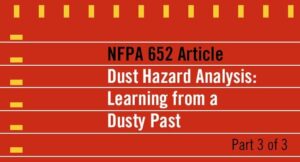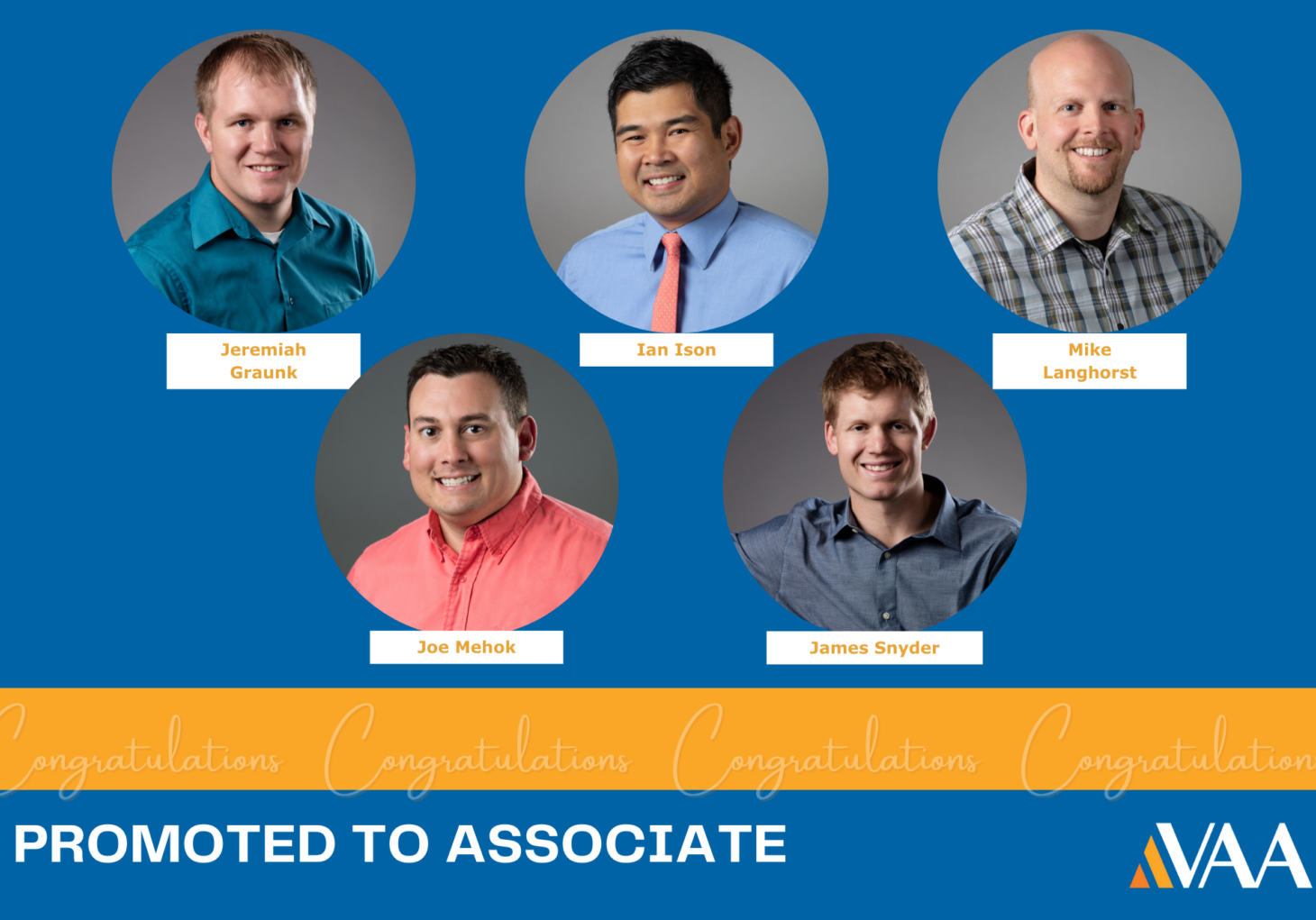VAA News | June 13, 2018
Part 3: Learning from a Dusty Past

To conclude VAA’s three-part series on the changing NFPA 652 guideline, we focus on a few compelling reasons to start moving your facility toward compliance.
The continued development and updates of the NFPA guidelines are, at least in part, developed as a result of past, unaddressed facility hazards. As a preventative measure and code improvement, NFPA 652 recommends DHA inspections are conducted once every five years. However, only some state and local jurisdictions have adopted NFPA 652 as a requirement.
It is important to note the relationship between NFPA guidelines and the International Building Code (IBC). IBC dictates the industry standard and references other guidelines to bring new versions into their requirements. NFPA 652 is not yet directly referenced in the current IBC requirements. While this means DHA’s are not currently required by the IBC, there are a few compelling reasons to get ahead of the regulation.
- Safety
Tracking and mitigating the accumulation of dust at your facility is critical to the safety of the operators. A DHA can help prove a facility is compliant or identify areas of concern and offer solutions. The painful results of ignoring potential dust hazards can include costly equipment failure, dust deflagration and, most importantly, loss of life. - Project Schedule
Depending on the local codes and jurisdictions, Code Officials may be working from the new guidelines. In that case, officials can deny a building permit if a DHA has not been completed. The delay will set new facility and expansion projects back in time and expense. - Expert Predictions
Based on the trend of previous updates, it is likely that the 2016 edition of NFPA 652 will be standardized and referenced in the IBC code by 2021. Keeping up with dust hazards and related guidelines will lead to safer facilities and fewer future project / maintenance hassles.
Read the other parts of this series for more information:
Part 1: What is a Dust Hazardous Analysis?
Part 2: DHA in New and Existing Facilities
About the Authors
As a Senior Designer at VAA, Doug regularly works with owners and design-build contractors to design feed mills, grain elevators and other agricultural bulk material handling and processing facilities from early stages of project conception through final design and construction. Doug’s 15 years of experience in agribusiness has translated into a comprehensive understanding of how different construction methods; material handling and process systems; and the NFPA affect design. His favorite part of the job is meeting with plant managers at their facility to understand challenges and work together towards improving operations.
Eric has two decades of domestic and international experience, including feed mills, grain export terminals, flour mills, bulk storage facilities and specialty slipform structures. Versatile in managing both engineering and construction efforts, he understands the details needed to fulfill design, constructability,
procurement and cost estimating activities. A member of the NFPA, Eric’s knowledge of material handling, mechanical and structural engineering is complemented by his technical skills in AutoCAD, P6 and Hard Dollar. Prior to joining VAA, Eric worked for a design-build contractor where he developed design concepts with clients and coordinated design and construction efforts with equipment vendors and subcontractors. Clients appreciate his global understanding of the design / construction process to accomplish operational goals and challenging facility requests.
Share with a Friend
Recent Posts
Let's connect.
Whether you need a new or expanded facility, a process designed or debottlenecked, life safety or structural analysis… VAA can help you grow.






